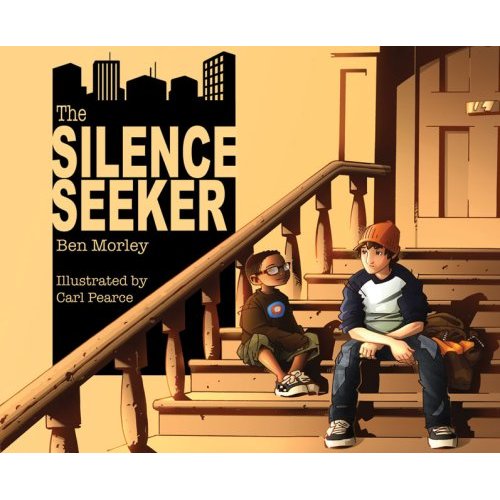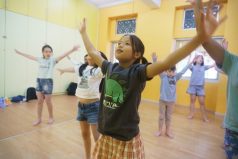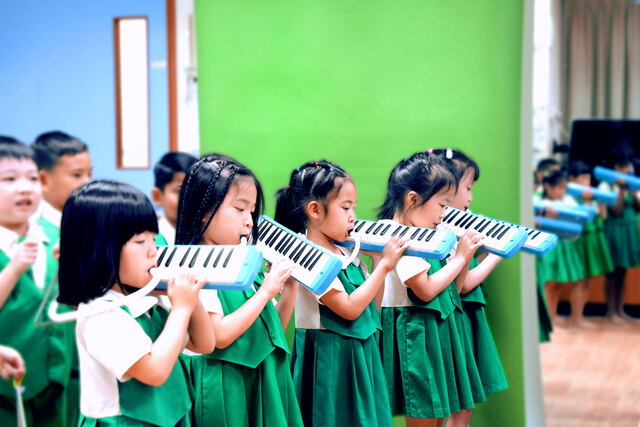In our exclusive email interview with Ben Morley with some great interview questions, he talks about his kids’ fiction book called The Silence Seeker. Here’s the synopsis for the book:
When a new family moves in next door, Joe’s mum explains that they are asylum seekers. Joe hears that they are silence seekers, especially as Mum adds that they need peace and quiet. When he sees a young boy from the family sitting disconsolately on the steps, Joe decides to help him find a quiet place in the noisy and chaotic city.
Hi Ben,
1) Would you like to start by introducing yourself to our readers?
My name is Ben Morley and I have been living and working in Singapore for almost 3 years now. Originally, I am from London and I have a BA (HONS) degree in Education from Durham University. I have been teaching in Early Years education for 11 years now and have worked at schools in the UK, Poland, Brunei and Shanghai.
This is my third year at Eton House Orchard where I combine my role as a class teacher with that of PYP Coordinator/Assistant Director for the whole school. In the mornings, I am classroom-based and, in the afternoons, I am busy away from the classroom with my other roles. I am married to Heloise, a designer, and have two children…a daughter, Lyra, who has just turned 3 and a son, Rocco, who is 1. I enjoy sports, the outdoors, writing and snakes!

2) The concept of finding silence in the city is interesting. Can you tell us more about the inspiration behind this book?
3) Refugee immigration seems to be one of the running themes in the story. What is the core message that you are trying to get across to the children?
If it is OK, I will answer these two questions together. Many years ago, I was living and working back home in inner-city London. I was a teacher at a large, state primary school. It was many, many miles from Singapore in so many ways, not just geographically.
The intake of the children in the school was a true reflection of the surrounding area. A surrounding area that still includes some of the most deprived housing estates in London, if not the entire UK.
I would often share books with the children at this school and feel the stories they told were so far removed from the children’s lives that they found it really difficult to connect with them.
Of course, I know a good story sometimes takes us a long way away from reality and we are able to lose ourselves in that anonymity for a while but I wanted to write something that these children could relate to. strong>Something they might believe. I wanted them to see children like themselves on the front cover of a book and I thought that, perhaps, this might persuade them to open it and have a look.
As you can imagine, many of the children in the school had first hand experience of immigration and others were asylum seekers or had very real connections to asylum seekers. These children had already been through so much in spite of their young age.
Unsurprisingly, the subject of asylum seekers often came up during class discussions, particularly with the older children, and it was incredible to hear these children share their stories with their newfound friends. These stories were often hard to fathom, frequently desperately sad but what I sensed time and again in the children was hope.
It was this sense of hope that inspired me to write a story about asylum seekers. However, it is not necessarily about asylum seekers, it is more about belonging and the possibilities of friendship. How children often see people for what they really are not what they have been labelled with, how children live in the present and, above all, how children have a huge capacity for understanding, empathy and love. I believe the story celebrates how children embrace a shared humanity that seems to come so naturally to them.
Also, I didn’t want to write a story with a ‘happy ending’ but, at the same time, I didn’t want the story to have a sad ending either. I wanted it to be open. I wanted to write a story that left the reader or the listener space to think. Spaces they might then choose to fill in themselves.
4) What do you think is a good way to find silence in the busy and frantic world we live in today?
I think we all need to find our own quiet places once in a while. Places where we can be alone with our thoughts and take stock of our lives. The place you find that silence may not need to be too far from home. In fact, it might just mean finding a quiet corner in your own home and being by yourself for a short while. I know I certainly do this.
However, for me in Singapore, I truly enjoy spending time in the great outdoors, be it running around MacRitchie Reservoir or walking around Sungei Buloh Wetland Reserve. I find these places put my problems into perspective and I return home more relaxed and calmer afterwards… although the cicadas are not very silent!
5) Was Joe right in thinking that the refugee asylum-seeking neighbours were actually seeking for quiet peace from their past?
I think this is up for the reader to decide!
6) The book talks about the unique friendship between Joe and the boy who suddenly left. Do you have any similar personal experience in Britain?
I grew up in a very multi-cultural area of London. The schools I attended as a boy and the schools I have worked in as an adult are a reflection of this society. I am proud to say that I have friends from every corner of the globe and some of these friends happen to be immigrants to the UK or the children of immigrants to the UK. I think what is particularly poignant about the friendship between Joe and the boy is that it is a friendship without words.
As Leroy Brownlow once said, “Sometimes silence is the loudest voice” and I think he was right. The friendships I have established over the years often don’t start with language but with a shared interest or passion. Again, this is the idea of shared humanity I wanted to get across in the story.
7) Can you give us some tips as to how to engage our children in the book?
Firstly, I didn’t write the story with a particular age range in mind. I believe that picture books are for everybody and not necessarily for younger children. As many of you know, a good picture book is read or heard a thousand times, night after night, and I wanted to write a story that might offer something new on each reading.
As Britain’s Children’s Laureate, Anthony Browne, put it, “A gradually expanding sense of understanding.” To this end, I hope there is something for us all to think about in the story.
Perhaps, this book will serve as a springboard for discussions about this important issue, no matter how far removed from that reality the listener may feel they are here in Singapore. I hope this is something they will think about, reflect on and, ultimately, act upon. Or, perhaps, they will just enjoy it as a story in itself.
In the end, I think back to the children I taught in London, I think of my own children and I think of the children I have known in many, many schools across the globe and I know that, if we were to put them all in a big room together, the vast majority of them would get on like a house on fire! Sometimes as adults, we forget this and I strongly believe this is something we need to embrace.
Thanks for your time taken to answer our questions!
You are more than welcome… happy reading everybody!
Any thoughts to share after reading this interview? Perhaps you would like to share your views on the author’s book with us and our readers by writing in to us!
If you find this article useful, do click Like and Share at the bottom of the post, thank you.
Like what you see here? Get parenting tips and stories straight to your inbox! Join our mailing list here











































